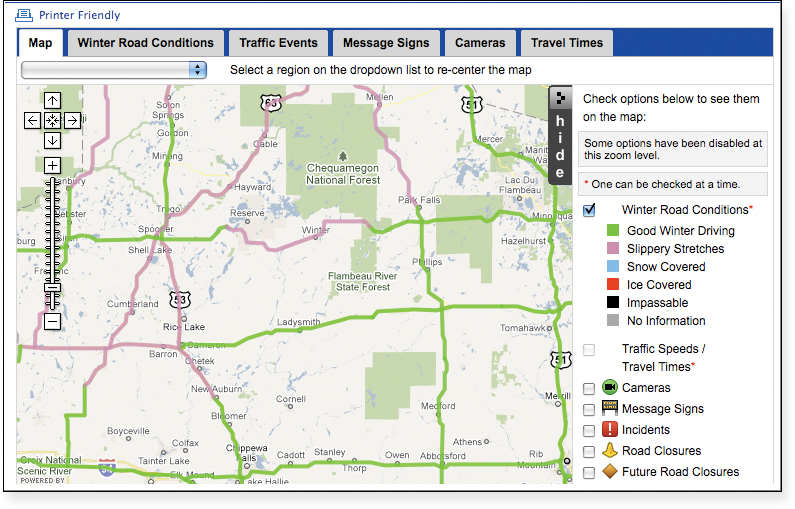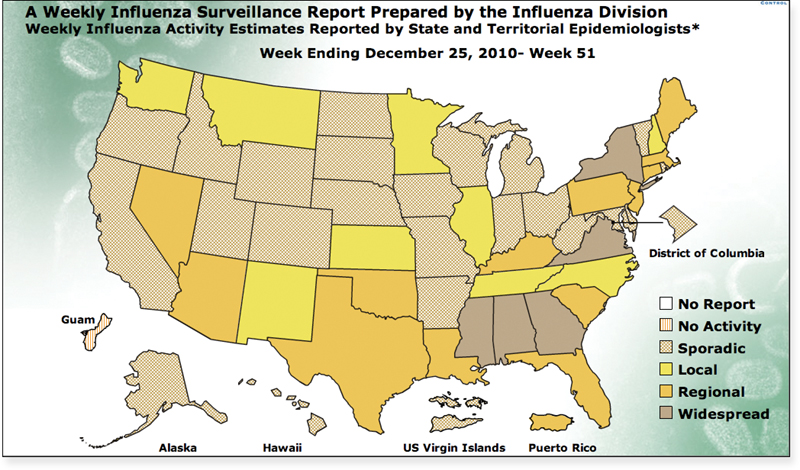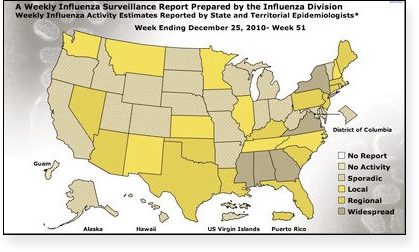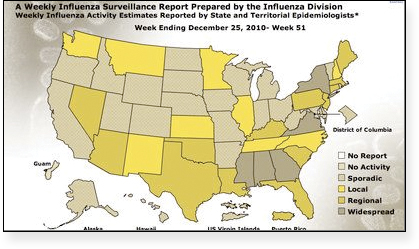51. Nine Percent of Men and 0.5 Percent of Women are Color Blind
The term color blindness is actually a misnomer. Most people who are color blind are not blind to all colors but rather have a color deficiency that makes it hard for them to see differences between some colors. Most color blindness is hereditary, although it can also be acquired through disease or injury. Most of the color genes are on the X chromosome. Since men have only one X chromosome and women have two, men are more likely to have problems with color vision than women.
There are many different kinds of color blindness, but the most common is a difficulty distinguishing between reds, yellows, and greens. This is called red-green color blindness. Other forms—such as problems distinguishing blues from yellows, or where everything looks gray—are very rare.
Figure 51.1 shows a map of winter driving conditions (from the Wisconsin Department of Transportation) as it appears to someone who has no color blindness. Figure 51.2 shows the same map as a person with red-green color blindness would see it, and Figure 51.3 shows the same map as a person with blue-yellow color deficiency would see it. Notice that the colors are different.
Figure 51.1. Full-color vision
Figure 51.2. Red-green color deficiency
Figure 51.3. Blue-yellow color deficiency
The rule of thumb is that wherever you use color to give specific meaning, you need a redundant coding scheme—for example, color and line thickness—so that people who are color blind will be able to decipher the code without needing to see specific colors.
Another approach is to pick a color scheme that works for people who have the various types of color blindness. Figure 51.4, Figure 51.5, and Figure 51.6 show diagrams of the spread of influenza for a particular week. Colors were purposely picked so that they would look the same for people regardless of the type of color blindness they have, and even if they are not color blind. The three instances of the diagram look almost exactly the same.
Figure 51.4. Full-color vision (Courtesy of www.cdc.gov)
Figure 51.5. Red-green color deficiency (Courtesy of www.cdc.gov)
Figure 51.6. Blue-yellow color deficiency (Courtesy of www.cdc.gov)
![]() Use web sites to check for color blindness effects
Use web sites to check for color blindness effects
There are several sites you can use to check how your images will appear to someone who has color blindness. Here are two I recommend:
http://colorfilter.wickline.org






